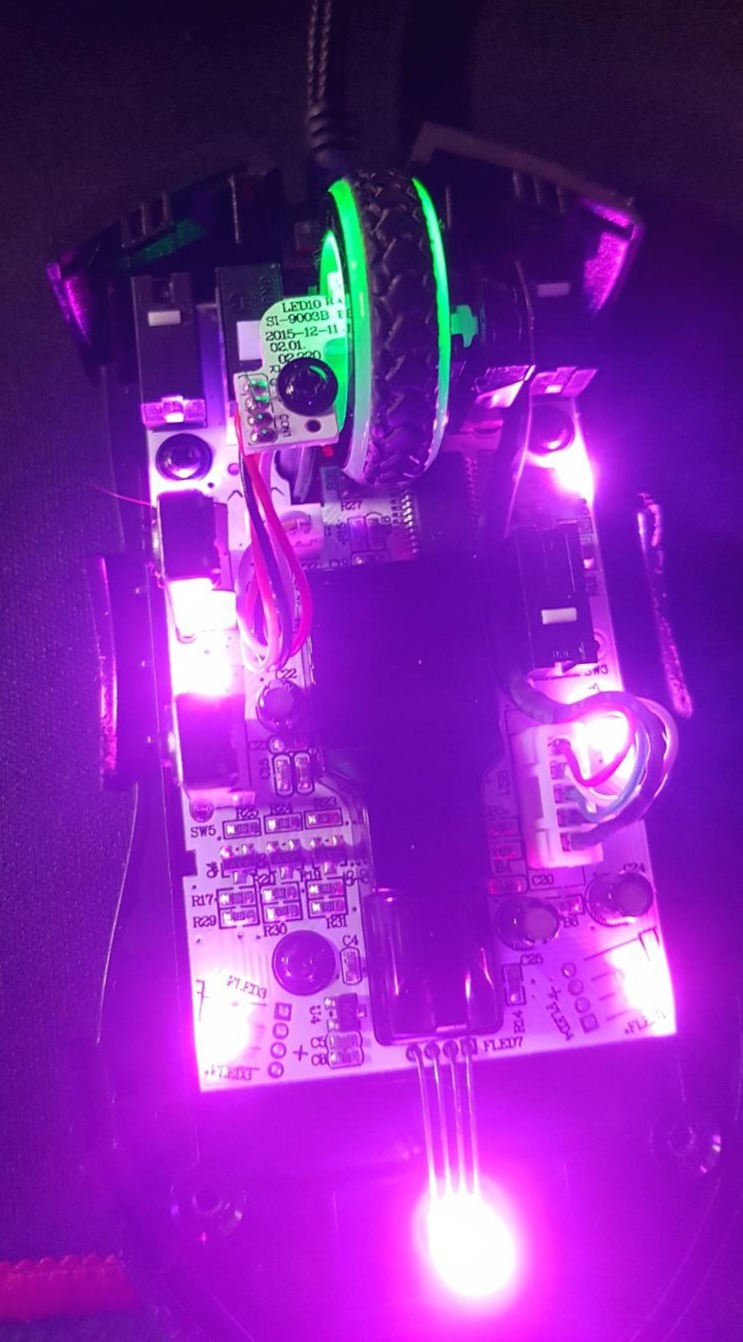Notice
Recent Posts
Recent Comments
Link
| 일 | 월 | 화 | 수 | 목 | 금 | 토 |
|---|---|---|---|---|---|---|
| 1 | 2 | 3 | 4 | 5 | 6 | |
| 7 | 8 | 9 | 10 | 11 | 12 | 13 |
| 14 | 15 | 16 | 17 | 18 | 19 | 20 |
| 21 | 22 | 23 | 24 | 25 | 26 | 27 |
| 28 | 29 | 30 | 31 |
Tags
- Linux
- error
- pip
- YOLO
- 기타 연주
- VS Code
- 컨테이너
- 핑거스타일
- 오류
- Numpy
- ubuntu
- mysql
- 프로그래머스
- JSON
- paramiko
- pytorch
- C++
- Python
- Visual Studio
- SSH
- windows forms
- Docker
- C
- Selenium
- 채보
- OpenCV
- pandas
- C#
- nvidia-smi
- label
Archives
- Today
- Total
기계는 거짓말하지 않는다
PyTorch Multiclass Classification 본문
PyTorch를 이용한 Multiclass Classification
Custom Data
feature 5개, label 종류 6개로 이루어진 데이터.
각 label마다 기본 base 값을 토대로 무작위로 생성 (Total 1200개)
custom_random_data.csv
0.11MB


import pandas as pd
dataFrame = pd.read_csv("custom_random_data.csv", delimiter=",");
# label 종류 별 feature 표준편차 확인
print(dataFrame.groupby("Name").std())
표준편차가 큰 F3 feature를 제외한 나머지로 학습을 진행
Custom Dataset, Custom Model
class CustomDataset(Dataset):
def __init__(self, data, label):
self.x = [i for i in data]
self.y = [i for i in label]
def __len__(self):
return len(self.x)
def __getitem__(self, idx):
x = self.x[idx]
y = self.y[idx]
x = np.array(x)
return x, y
class CustomModel(nn.Module):
def __init__(self, feature_length, label_size):
super(CustomModel, self).__init__()
self.relu = nn.ReLU()
self.fc1 = nn.Linear(feature_length, 128)
self.fc2 = nn.Linear(128, 256)
self.fc3 = nn.Linear(256, label_size)
def forward(self, x):
x = self.relu(self.fc1(x))
x = self.relu(self.fc2(x))
x = self.fc3(x)
return xTrain
def train(model : CustomModel, criterion : nn.CrossEntropyLoss, train_loader : DataLoader,
valid_loader : DataLoader, device, val_every : int, threshold : float):
model.train()
save_model_location = "weights/"
save_model_name = "best.pt"
save_model_min_loss = "min_loss.pt"
total_loss = 0
min_loss = float("inf")
min_loss_epoch = 0
calc_loss = 0.0
best_accuracy = 0.0
for i in range(epoch):
for x, y in train_loader:
x = x.float().to(device)
y = y.long().to(device)
outputs = model(x) # forward
loss = criterion(outputs, y)
optimizer.zero_grad()
loss.backward()
optimizer.step()
total_loss += loss.item()
calc_loss = total_loss / len(train_loader)
print('Epoch [{}/{}], Train Loss: {:.4f}, Best Valid Accuracy: {:.4f}'
.format(i+1, epoch, calc_loss, best_accuracy))
if calc_loss < min_loss:
min_loss = calc_loss
min_loss_epoch = i+1
torch.save(model.state_dict(), save_model_location + save_model_min_loss)
print("--" * 25)
print("Saved | Min Loss: {:.4f}, Min Loss Epoch: {}".format(min_loss, min_loss_epoch))
print("--" * 25)
if ((i + 1) % val_every) == 0:
average_valid_loss, total_acc, total_count = \
validate(model, criterion, valid_loader, device, threshold)
model.train()
if best_accuracy <= (total_acc/total_count):
check = False
if best_accuracy == (total_acc/total_count):
if min_loss < calc_loss:
pass
else:
check = True
if best_accuracy != (total_acc/total_count) or check == True:
best_accuracy = total_acc/total_count
saving_best_model_path = save_model_location + save_model_name
print("--" * 25)
torch.save(model.state_dict(), saving_best_model_path)
print(f'Valid Accuracy: {best_accuracy:.4f}, Valid Loss: {average_valid_loss:.4f}')
print(f"Saving Best Model(Path): {saving_best_model_path}")
print("--" * 25)
total_loss = 0Validate
def validate(model : CustomModel, criterion : nn.CrossEntropyLoss, valid_loader : DataLoader, device, threshold : float):
model.eval()
valid_loss = 0.0
total_acc, total_count = 0, 0
softmax = torch.nn.Softmax(dim=1)
model.eval()
with torch.no_grad():
# validation loop
for x, y in valid_loader:
x = x.float().to(device)
y = y.long().to(device)
outputs = model(x)
loss = criterion(outputs, y)
valid_loss += loss.item()
outputs = softmax(outputs)
outputs = (outputs > threshold).int()
total_acc += (outputs.argmax(1) == y).sum().item()
total_count += len(y)
average_valid_loss = valid_loss / len(valid_loader)
return average_valid_loss, total_acc, total_countEvaluate
def evaluate(model, test_loader, classes, label_numbers, device, threshold=0.7):
y_pred = []
y_true = []
pred_ans = [0] * len(label_numbers)
true_cnts = [0] * len(label_numbers)
softmax = torch.nn.Softmax(dim=1)
model.eval()
with torch.no_grad():
for x, y in test_loader:
x = x.float().to(device)
y = y.long().to(device)
outputs = model(x)
outputs = softmax(outputs)
outputs = (outputs > threshold).int()
y_pred.extend(outputs.tolist())
y_true.extend(y.tolist())
y_pred = np.argmax(y_pred, axis=1)
print("Classification Report:")
print(classification_report(y_true, y_pred, labels=label_numbers, digits=4))
for pred, true in zip(y_pred, y_true):
true_cnts[true]+=1
if pred == true:
pred_ans[pred]+=1
for ln in label_numbers:
if true_cnts[ln] == 0: continue
print(f"Name [{classes[ln]}]:",
f"{pred_ans[ln]/true_cnts[ln]:.4f}", f"({pred_ans[ln]}/{true_cnts[ln]})")Main
import numpy as np
import pandas as pd
from sklearn.model_selection import train_test_split
from sklearn.metrics import classification_report
import torch
import torch.optim as optim
from torch.utils.data import Dataset, DataLoader
import torch.nn as nn
dataFrame = pd.read_csv("custom_random_data.csv", delimiter=",");
selected_cols = ["F1", "F2", "F4", "F5", "Name"]
selected_feautures = ["F1", "F2", "F4", "F5"]
dataFrame = dataFrame[selected_cols]
# feature 개수, linear input
feature_length = len(dataFrame.columns) - 1
# string type label을 value로 변환하기 위해 참조 list로 변환
name_list = list(set(dataFrame["Name"]))
name_list = np.sort(name_list)
name_dict = {}
for i in range(len(name_list)):
name_dict[name_list[i]] = i
x_data = dataFrame[selected_feautures].to_numpy()
labels_np = dataFrame["Name"].to_numpy()
y_data = [name_dict[d] for d in labels_np]
# data 확인
# print(x_data, y_data)
# train, test, valid set으로 나눔
test_ratio = 0.2
valid_ratio = 0.2
random_state = 42
# train, test set
x_train, x_test, y_train, y_test = train_test_split(x_data, y_data, test_size=test_ratio, shuffle=True, stratify=y_data, random_state=random_state)
# train, valid set
x_train, x_valid, y_train, y_valid = train_test_split(x_train, y_train, test_size=valid_ratio, shuffle=True, stratify=y_train, random_state=random_state)
# dataset, dataloader, model 생성
batch_size = 16
train_dataset = CustomDataset(x_train, y_train)
train_loader = DataLoader(train_dataset, batch_size=batch_size, shuffle=True)
valid_dataset = CustomDataset(x_valid, y_valid)
valid_loader = DataLoader(valid_dataset, batch_size=batch_size, shuffle=True)
device = torch.device('cpu') # torch.device('cuda') if torch.cuda.is_available() else torch.device('cpu')
model = CustomModel(feature_length, len(name_list)).to(device)
# loss function, optimizer, scheduler
criterion = nn.CrossEntropyLoss()
optimizer = optim.Adam(model.parameters() , lr = 0.01)
lr_scheduler = torch.optim.lr_scheduler.StepLR(optimizer, step_size=100, gamma=0.01)
# parameter
epoch = 50
val_every = 3
threshold = 0.8
# train enable
enable_train = 1
if enable_train == 1:
train(model, criterion, train_loader, valid_loader, device, val_every, threshold)
else:
model.load_state_dict(torch.load('weights/best.pt'))
label_numbers = list(name_dict.values())
test_dataset = CustomDataset(x_test, y_test)
test_loader = DataLoader(test_dataset, batch_size=1, shuffle=False)
evaluate(model, test_loader, name_list, label_numbers, device, threshold)결과



'AI' 카테고리의 다른 글
| 활성화 함수(Activation Function) (0) | 2021.10.20 |
|---|---|
| 다층 퍼셉트론(Multi-Layer Perceptron) XOR (0) | 2021.10.18 |
| PyTorch torchvision transforms (0) | 2021.09.05 |
| PyTorch Dataset, DataLoader (0) | 2021.09.05 |
| PyTorch no_grad, eval (0) | 2021.08.29 |
Comments



